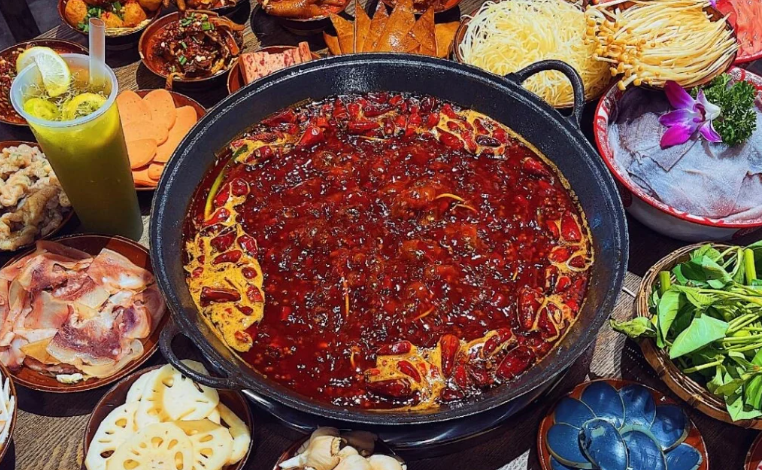Savoring the Heart of China: An Exploration of Henan Food

Nestled in the heart of China, Henan Province is not only a cradle of ancient civilization but also a treasure trove of culinary delights. Its cuisine, often referred to as Yu Cuisine, boasts a history as rich and profound as the land itself, making it one of the oldest and most influential culinary traditions in the country. Henan food is a testament to the region’s agricultural abundance and its people’s ingenuity, characterized by a harmonious blend of flavors and a diverse array of cooking methods that have been perfected over centuries. It’s a cuisine that tells stories of emperors and common folk, of bustling markets and quiet family meals, offering a genuine taste of Central China’s enduring heritage.
Characteristics of Henan Cuisine
Henan cuisine is renowned for its balanced and nuanced flavor profile, which masterfully incorporates all five tastes: sour, sweet, bitter, spicy, and salty. Unlike some regional cuisines that might lean heavily on one dominant flavor, Henan food strives for a harmonious blend, creating dishes that are both comforting and complex. This balance is achieved through meticulous preparation and a deep understanding of ingredients.
Traditional cooking methods play a crucial role in defining Henan cuisine. Steaming, stewing, and braising are frequently employed, allowing ingredients to slowly meld their flavors and textures, resulting in tender meats and rich, aromatic broths. These methods also reflect a historical emphasis on nourishing and wholesome meals.
The province’s fertile plains contribute to an abundance of fresh, local ingredients. Wheat-based staples are particularly prominent, with a vast array of noodles, steamed buns, and dumplings forming the backbone of many meals. Alongside these, various meats (especially beef and lamb), poultry, and a wide selection of seasonal vegetables are skillfully incorporated, showcasing the region’s agricultural wealth.
Iconic Henan Dishes to Savor
No exploration of Henan food would be complete without delving into its signature dishes, each offering a unique culinary experience:
Hulatang (Spicy Soup): A quintessential Henan breakfast, Hulatang is a thick, savory, and spicy soup, often enriched with beef or lamb, vermicelli, wood ear mushrooms, and gluten. Its warming and invigorating properties make it a beloved start to the day for many locals.
Braised Noodles (Hui Mian): This hearty dish is arguably Henan’s most famous. Wide, hand-pulled noodles are simmered in a rich lamb or beef broth, often accompanied by tender meat slices, vegetables, and various seasonings. It’s a comforting and deeply satisfying meal.
Luoyang Water Banquet: A historical and elaborate culinary tradition, the Luoyang Water Banquet consists of a series of soup-based dishes, served one after another, creating a flowing, elegant dining experience. It showcases the intricate artistry and refined flavors of ancient imperial cuisine.
Carp with Fried Noodles in Sweet and Sour Sauce: This classic dish combines the region’s freshwater carp with crispy fried noodles, all bathed in a tangy and sweet sauce. It’s a testament to Henan’s skill in preparing both aquatic ingredients and its beloved wheat products.
Kaifeng Steamed Stuffed Buns (Guo Tie): While not exclusively from Henan, Kaifeng’s version of steamed stuffed buns, often pan-fried to a crisp bottom, are a local specialty, filled with savory meats and vegetables, offering a delightful texture contrast.
The Cultural Significance of Henan Food
Henan food is more than just sustenance; it is a vibrant reflection of the region’s rich history, diverse geography, and profound agricultural heritage. As the historical heartland of China, Henan’s culinary traditions have been shaped by centuries of cultural exchange and innovation. The emphasis on wheat-based dishes, for instance, directly stems from its status as a major wheat-producing region, influencing not only its staple foods but also its cooking techniques and flavor profiles.
Food plays a central role in the daily lives of Henan people, serving as a focal point for family gatherings, celebrations, and community bonding. From the bustling breakfast stalls serving Hulatang to elaborate banquets, each meal is an opportunity to connect with tradition and share in communal joy. The meticulous preparation and the balance of flavors in Henan cuisine also embody the philosophical principles of harmony and moderation deeply ingrained in Chinese culture. Furthermore, Henan cuisine has historically influenced, and been influenced by, other regional Chinese cuisines, acting as a culinary bridge in the vast and diverse landscape of Chinese gastronomy.
Conclusion: A Culinary Journey Through Henan
Henan food offers a captivating journey into the heart of Chinese culinary traditions. Its rich history, diverse flavors, and iconic dishes paint a vivid picture of a region deeply connected to its land and heritage. From the comforting warmth of Hulatang to the elaborate artistry of the Luoyang Water Banquet, each dish tells a story, inviting diners to experience the authentic tastes and cultural depth of Central China. Exploring Henan food is not just about satisfying hunger; it’s about connecting with a culinary legacy that continues to thrive, offering a profound and delicious insight into the soul of China.
